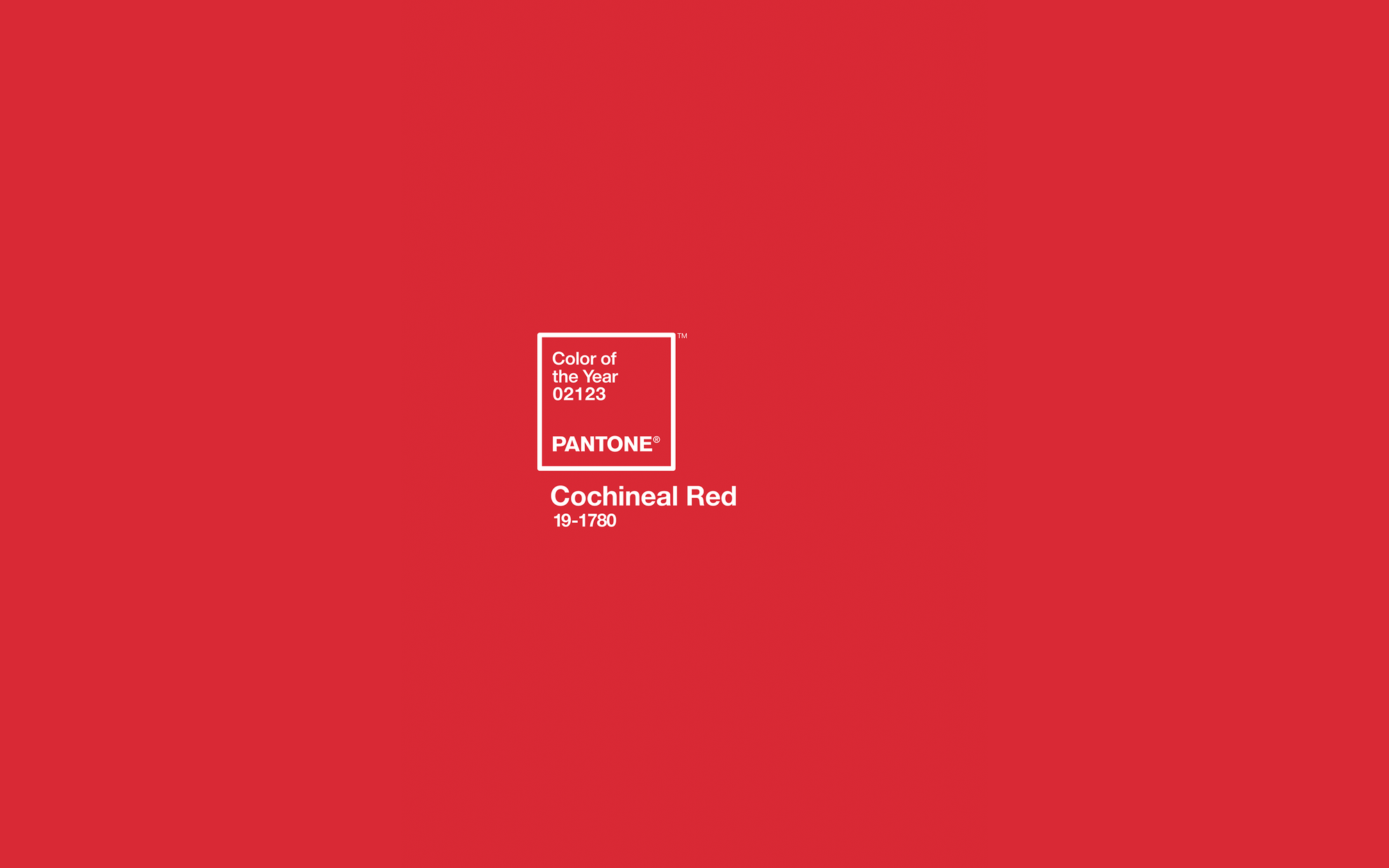
Announcing the Pantone Color of the Year 02123
A speculative glimpse into the bioengineered future of fashion.
LEARN MORE
In a cultural milieu suffused with technological progress and biological optimism, Pantone’s color of the year for 02123, Cochineal Red, speaks to the exuberance of the moment. PANTONE 19-1780 Cochineal Red, a resplendent shade of ruby, pays tribute to its namesake, the cochineal beetle in an equally bold display — by distancing itself from it.
While humanity has been using cochineal beetles for millennia to produce vivid red dyes in textiles, clothing, cosmetics, paint, and food products, the pigments used to create Cochineal Red© are derived from lycopene biosynthesis in yeast, a process that effectively supercharges an antioxidant and red-colored pigment already present in red carrots, papaya, and tomato. The resulting colorant is scalable, cost-effective, and fully vegan. It is, in essence, the union between bioengineered microorganisms and liberated ones.
In the 123 years that Pantone has been selecting an annual color, reds (as well as closely related pinks and purples) have made appearances 68 times. And for every one of those years, a bloodbath worthy of their sanguine shades ensues. Trillions upon trillions of these cochineal beetles, which are not really beetles at all but a species of Hemiptera known as scale insects, are farmed and pulverized for their carminic acid, or carmine, a substance that makes up around 20 percent of the dry weight of their bodies and one which produces the world’s most arresting reds.
“We chose this color because we think it is time to address the carnage of previous industry paradigms,” Darius Keller, executive director of the Pantone Institute, tells me. “While the 02115 injunction on insect farming for livestock feed and aquaculture may be old news, last year’s moratorium on all arthropod-derived bi-products in human food additives is groundbreaking. We wanted a color that acknowledges the brutality of previous centuries, but also one that expresses animation and alertness. The latter is especially important because we are trying to allude to some property present in conscious states, the same property that the architects of these protective laws appeal to when they increase the scope of animals whose welfare it’s our moral obligation to concern ourselves with.”
Though the evidentiary picture of invertebrate sentience may still be painted in the most ambiguous of grays, the precautionary principle is clear: we should give any living animal the benefit of the doubt. By this logic, although it is unclear that cochineal beetles and other scale insects experience any conscious states, “unclear” is enough to afford them some degree of legal protection. As it stands, there is an average of 110K insects killed per kilogram of cochineal in a practice that dates back to antiquity, ultimately amounting to trillions upon trillions sacrificed for the hue. In an era where mounting data sketches a portrait of sentience amongst other more sophisticated insects, the paucity of research on cochineal beetles is insufficient to suggest that they suffer while at the same time to convince us that they do not.
Whether life as a largely immobile sap-sucking parasite is pleasant, or valenced at all, remains to be seen, but the ways that cochineal beetles are harvested and processed are dubious for an animal that may or may not have conscious experiences. The simplest, and possibly the oldest, method to process cochineals was to spread the insects on mats placed in the sun, desiccating them. It was recorded that this method produced some of the best cochineals, which is just as well because alternative methods of killing and harvesting the insects involved submerging them in buckets of boiling water or steam or suffocating them with sulfur.
Some might bracket criticism of these practices by stating that these were different times. Science as we know it was in its infancy. Even some of the greatest minds of antiquity, such as Pliny the Elder, described scale insects as berries that turned into worms — undoubtedly a striking feat for any berry, but one which removes much of the onus of “slaughter,” while their turning into worms evokes a “natural” process of riot and decay, one which boiling or drying is only hastening. For generations people operated under a monotheistic worldview, which saw mankind’s dominance over the earth as preordained. As such, the red-hued slaughter of scale insects would just take its place beside the kosher or halal throat-slitting of blood-bearing beasts. However, these harvesting practices persisted well after people had the resources and instruments to know better about the constraints of speciesism or the underestimation of animal cognition.
As 02123 ushers in yet more victories against obsolete and immoral industries, we must remain chastened by the centuries of crunching cochineal carapaces. Uncertainty abounds in many human enterprises, and we do well to hold the precautionary principle close. Fortunately, there is great polysemy in red. There is caution as well as courage, passion as well as purpose. Perhaps it is unsurprising that it is here in red’s longest wavelength, where we chase the arc of the moral universe.
Join our newsletter for the latest in long-term thinking
Subscribe